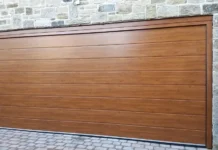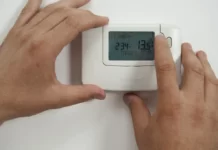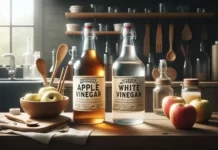Aluminum is a popular choice for many industrial and household appliances because it’s lightweight, durable, and resistant to corrosion. We use many things daily, including kitchen utensils, furniture, mirrors, fences, gates, electrical devices, and many other gadgets, all of which include aluminum.
However, even though aluminum is known for its corrosion resistance, it is still susceptible to corrosion if it’s not protected and maintained. Very small pits, small or large holes, splits, discoloration, etc. are indications of corrosion. Corrosion can cause aluminum to weaken and fail, leading to costly repairs or replacements.
Here, we will discuss the different methods for protecting aluminum from corrosion and why it is important to maintain the integrity of aluminum structures and products.
How to Maintain Products Made of Aluminum
Aluminum can be extremely durable and resilient but it’s not completely corrosion-proof. Under the wrong circumstances and without proper maintenance, it can get corroded pretty fast.
In aluminum, various kinds of corrosion take place. These include rusting, pitting corrosion, atmospheric corrosion, and so on. Understanding the different types of corrosion is crucial for protecting your equipment from damage.
To keep your aluminum doors, windows, and appliances clean, take the following actions.
1. Clean Regularly
To keep your aluminum products looking their best, it is important to clean them regularly. Use a mild detergent and warm water to clean the surface of your aluminum product, and then rinse it thoroughly with clean water. Be sure to dry the surface thoroughly to prevent water spots.
The aluminum surface can be cleaned with a power washer. Avoid using lacquer thinner, as the oils in lacquer thinner have the potential to damage the surface. Do a study to determine which cleaning products or appliances are required based on your preferred procedure.
2. Use Paint Sealants
If your aluminum products are painted, use a paint sealant to protect the finish. A paint sealant is a type of coating applied to the aluminum’s surface to form a barrier that protects the metal from damage caused by environmental factors such as UV rays, moisture, and so on.
Applying paint sealant to aluminum products can help extend their lifespan and maintain their appearance.
If you’re looking for more information on how to paint aluminum properly, check out the aluminum painting guide for tips and techniques.
3. Choose between Different Types of Coating
Making the right coating choice is challenging and important.Crucial factors include item shape, design, drainage supply system, avoiding the use of mismatched material combinations and metal choice each play a role while selecting coating method.
An alternative to sealant would be a layer of coating. There are a variety of sealants available that can be applied to aluminum products to protect them from corrosion. Some of the most popular coatings include paint, anodizing, and powder coating.
a. Painting
Paint is a common coating that is used to protect aluminum products from corrosion. Paint creates a barrier between the aluminum and the environment, preventing water and oxygen from coming into contact with the metal.
Additionally, paint can be used to create a decorative finish on aluminum products.
b. Anodizing
Anodizing is another coating that can be used to protect aluminum products from corrosion. Anodizing is a process in which an aluminum product is submerged in an acid bath and a current is applied to the metal.
This process creates a thin layer of aluminum oxide on the surface of the metal, which helps to protect the aluminum from corrosion. Anodizing can also be used to create a decorative finish on aluminum products.
c. Powder Coating
Powder coating is another coating that can be used to protect aluminum products from corrosion. Powder coating is applied to an aluminum product and then heated to create a protective finish.
This coating is highly resistant to corrosion and can also be used to create a decorative finish on aluminum products.
4. Use a Protectant
To protect your aluminum products, use a protectant. This will help to prevent damage caused by UV rays, rain, and other weather conditions.
Be sure to use a protectant that is specifically designed for use on aluminum products. Try covering aluminum furniture which is difficult to move indoors with plastic sheets.
5. Avoid Abrasive Cleaning Products
Aluminum is a soft and easily scratched metal, so it’s important to avoid using abrasive cleaning products when cleaning aluminum surfaces. These products can damage the surface of the metal and leave scratches and scuffs that can be difficult to remove.
Instead, use a mild detergent or a solution of warm water and vinegar to clean aluminum surfaces. For tough stains or grime, use a soft-bristled brush or a non-abrasive sponge. Avoid using steel wool or scouring pads, as these can scratch and damage the surface of the aluminum.
You can also spray your aluminum products with a nickel spray to give them a brushed nickel finish. The extra layer helps protect the surface as well.
6. Store Your Products Indoors
Store them indoors when they are not in use to protect your aluminum products from damage caused by the elements. This will help to prevent damage caused by rain, snow, and other weather conditions.
Keep in mind that environmental conditions like moisture, temperature, etc. cause a chemical reaction in the aluminum that leads to corrosion.
7. Know More about the Usage
Proper usage of aluminum products is also important to protect them from damage and wear. This includes following the manufacturer’s instructions and guidelines for use, as well as avoiding subjecting the products to excessive stress.
8. Keep Aluminum Products Out of Direct Sunlight
Aluminum products can become discolored or damaged if they are exposed to direct sunlight for an extended period. To protect your aluminum products, keep them out of direct sunlight.
9. Regularly Inspect the Products
Regularly inspecting the aluminum products will help to identify any damage or discoloration early on, allowing you to act and prevent further damage.
10. Take Immediate Action if Any Damage is Found
If you notice any damage or discoloration on your aluminum products, take action immediately to prevent further damage. This may involve cleaning the surface, applying a protectant, or repainting the product.
11. Ensure Proper Maintenance
Regular maintenance of aluminum products can help to keep them in good condition and extend their lifespan.
This includes inspecting and cleaning the products, as well as taking steps to address any issues that are identified during the inspection process. Routine maintenance can also help to prevent discoloration.
12. Understand the Cause of Corrosion
The first step in preventing corrosion on aluminum products is to understand the cause of corrosion. Corrosion is the gradual destruction of metal caused by chemical reactions to the environment.
The most common cause of corrosion on aluminum products is exposure to water and oxygen. When aluminum comes into contact with water and oxygen, it forms a thin layer of aluminum oxide on the surface of the metal.
This layer is protective and helps to prevent further corrosion. However, if the aluminum oxide layer is damaged or removed, the aluminum can begin to corrode.
13. Keep Away from Acidic or Alkaline Substances
Another factor that can contribute to the corrosion of aluminum products is exposure to salt. Salt is highly corrosive and can cause severe damage to aluminum products.
This is especially true in coastal areas, where salt spray from the ocean can quickly corrode aluminum products. Additionally, exposure to acidic or alkaline substances can also cause corrosion on aluminum products.
14. Use Electroplating as a Protective Layer
Electroplating is a process where a layer of metal is deposited on the surface of aluminum using an electric current. This process can be used to protect aluminum from corrosion by applying a layer of a more corrosion-resistant metal, such as zinc or nickel.By acting as a barrier, that layer lowers friction and keeps the surface safe from tarnishing.
15. Use Galvanizing as a Protective Layer
Galvanizing is a process where a layer of zinc is deposited on the surface of aluminum using a hot-dip method. This process can be used to protect aluminum from corrosion by applying a layer of zinc, which is more corrosion-resistant than aluminum.
Final Thoughts
By implementing these steps, you can effectively protect aluminum products from corrosion and prolong their lifespan. It’s important to keep in mind that the specific requirements for protecting aluminum from corrosion will vary depending on the product and the environment it will be used in.
Be sure to consult with a professional if you have any questions or concerns about protecting your aluminum products from corrosion. Hope this article has helped you by providing all the necessary information.












